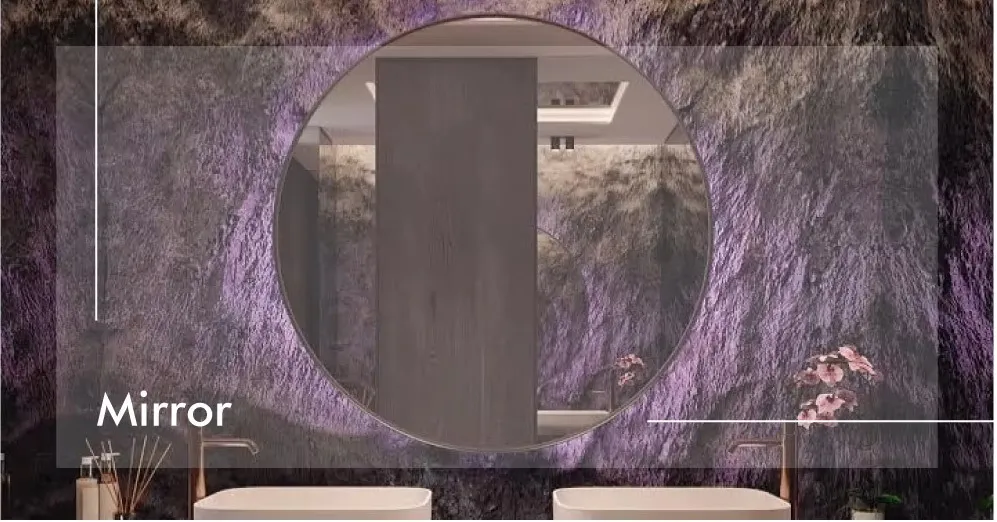
Gym Mirror Wall Standards: Spacing, Height, and Safety Regulations

Why Mirrors Matter in Your Fitness Space
Ever walked into a gym and immediately felt that spacious, energized vibe? Chances are, mirrors played a big role in that experience. These aren't just vanity features – they're crucial for proper form checks during squats or yoga poses. But installing gym mirrors isn't like hanging your bathroom mirror at home. There's serious science behind how tall they should be, how much gap you need between panels, and critical safety precautions you can't skip.
Picture this: a dancer extending into an arabesque, a lifter perfecting their deadlift form, or a yoga student aligning their spine – all rely on those reflection surfaces. Beyond form correction, they literally expand your perception of space. That cramped corner studio? Mirrors can make it feel twice as big. Plus, let's be honest, seeing your progress motivates you to push harder.
Getting Mirror Height Just Right
So what's the sweet spot for height? Industry standards recommend starting your mirror walls at about 12-18 inches above the floor. This creates a seamless visual field for people seated on workout benches or doing floor exercises. For the top edge, you'll want to hit at least 7 feet – tall enough that even your 6'5" members won't see the cutoff during overhead presses.
But height isn't one-size-fits-all. Consider these scenarios:
- Yoga & Pilates studios: Lower starting point (12 inches) gives visibility for floor work
- Weightlifting zones: 7-8 feet minimum to track barbell paths
- Dance studios: Full 8-10 foot panels to capture leaping and spinning
- Cycle studios: Higher bottom edge (24-36 inches) prevents distorted bike reflections
Pro Tip: Angle mirrors slightly downward (5-10°) in weight areas so lifters don't crane necks checking form. This subtle tilt improves visibility while reducing injury risks.
The Art of Mirror Spacing
No one wants that choppy carnival mirror effect! Spacing is key for seamless functionality. Keep gaps between panels under 1/8 inch – wider than that creates distracting lines and visual obstructions. For frames dividing mirror segments, stay within 1-2 inch widths max.
Planning your layout? Follow these guidelines:
- Vertical seams: Keep them above shoulder height to avoid cutting reflection at head-level
- Horizontal seams: Rarely needed but place at natural sightline breaks if necessary
- Support brackets: Hide vertical supports behind seams where possible
Remember those wall-mounted fans? Position mirrors to avoid reflecting moving blades that create dizzying strobe effects. And if you're hanging equipment like resistance bands or TRX systems? Maintain a 12-18 inch clearance gap.
Non-Negotiable Safety Standards
This is where you can't cut corners. Commercial gym mirrors must be safety-backed using tempered glass with ANSI Z97.1 certification. This ensures if impact occurs, glass breaks into tiny pebbles instead of dangerous shards.
Installation demands professional-grade solutions:
- Clips over adhesives: Allows for thermal expansion/contraction
- Stainless steel brackets: Placed every 18-24 inches vertically and horizontally
- Impact-resistant polymer backing: Extra protection layer
Ever seen those warning decals? They're legally required per ASTM F1306 standards. Place them conspicuously at eye level every 20 feet. And don't forget corner protection – install impact-resistant rubber bumpers on exposed mirror corners below 48 inches.
Specialized Mirror Solutions
Beyond the standard wall panels, consider these specialty applications:
Ceiling Mirrors
Perfect for pilates reformers and therapy tables, angled 60-70° from vertical. Must use shatterproof acrylic to eliminate falling glass hazards.
Column Wraps
When structural supports cut through workout spaces, full-height mirror wraps (maintaining 3-inch clearance) visually disappear obstacles.
Observation Windows
For trainer observation areas, use one-way mirror films that appear opaque from the studio side when lighting differentials exceed 5:1.
Maintenance That Extends Lifespan
Commercial-grade mirrors withstand way more abuse than residential ones, but they still need care. Daily wiping with microfiber cloths prevents micro-scratches from dirt abrasion. Use ammonia-free cleaners only – harsh chemicals degrade protective coatings.
Monthly Maintenance Checklist:
- Check bracket tension (re-tighten if movement detected)
- Inspect for edge chips or cracks
- Test safety film adhesion
- Clean behind weight racks and equipment borders
And here's a pro secret: Apply anti-fog coating (available from fitness suppliers) around group cycle and HIIT zones. Stops those condensation patches after intense cardio sessions!
Beyond Function: Creating Visual Energy
Smart mirror placement elevates your gym's vibe. Position them to reflect:
- Motivational signage
- Lighting installations
- Brand colors
- Outdoor views if possible
Avoid reflecting blank walls, storage areas, or exit signs. Strategically placed panels can double perceived space in boutique studios and create stunning infinity effects in hallways when facing each other with proper alignment.
Remember those building materials we discussed earlier? When integrated with appropriate structural support systems, mirrors transform both form and function. They should be part of your fitness environment design from initial planning, not retrofitted afterthoughts.
The Final Spot-Check
Before signing off on installation, run through this essential checklist:
- Tempered glass certification visible on every panel
- 1/8 inch minimum gap between wall and mirror for air circulation
- Vertical support brackets at maximum 24-inch intervals
- Reflective testing from multiple workout positions
- Warning decals at required density and height
- Contractor sign-off on structural load calculations
Getting mirror walls right is both an art and science. When planned strategically, they create safer, more inspiring, and functionally superior workout environments. That weightlifter checking their spine alignment? The dancer perfecting their extension? The yogi finding their center? They'll all benefit from these crucial considerations.
Tags:
Recommend Products











